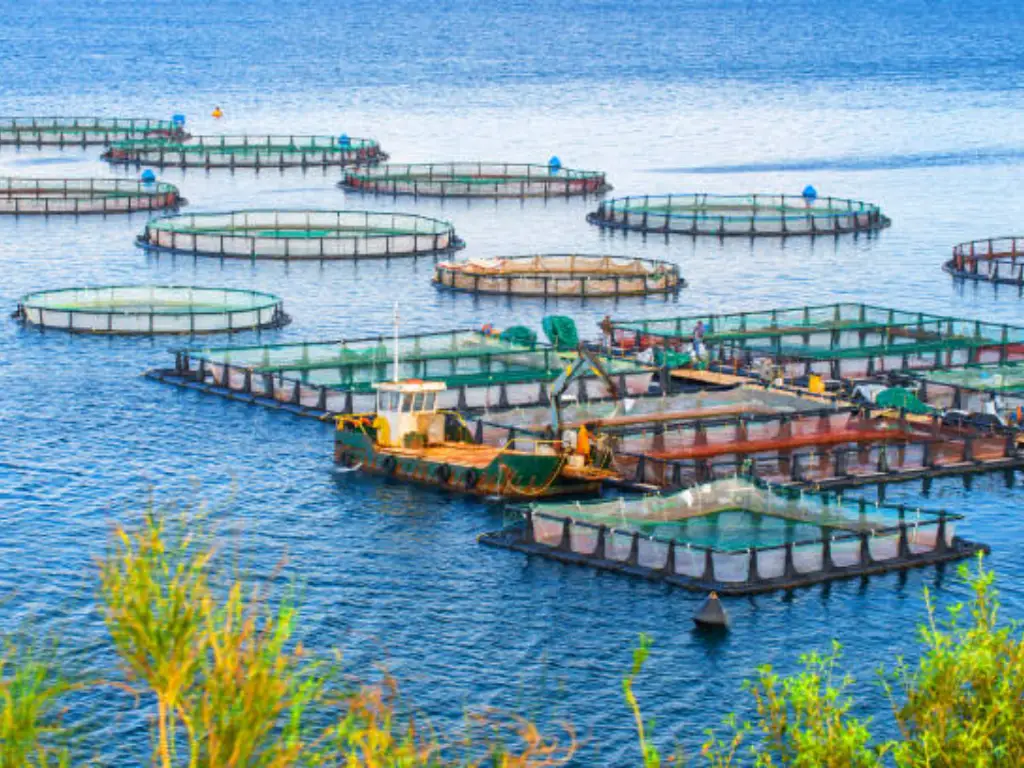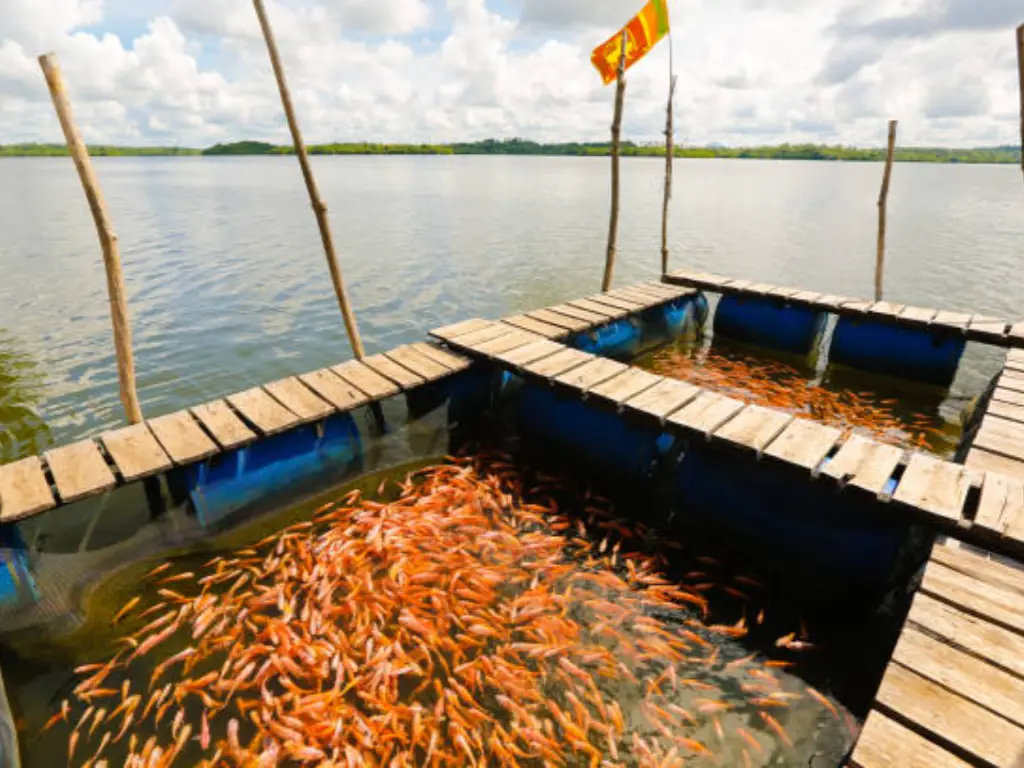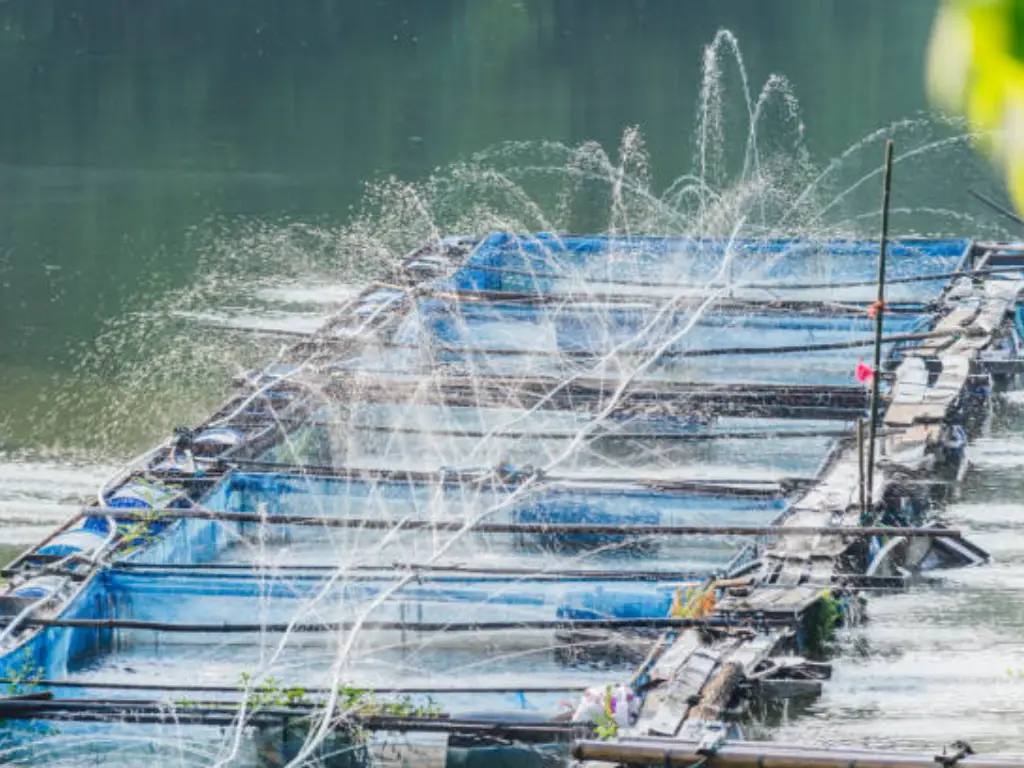Aquaculture, or fish farming, is a fast-growing business that has become an important part of the worldwide fish production. With the ever-increasing population of the world, the need to consume seafood has also been on the rise, particularly in areas where wild fish stocks are becoming scanty. This article will discuss the pros of aquaculture, as well as the disadvantages of aquaculture so that you can get to know the intricacies of the industry before you make a decision.
The Global Demand Fueling Fish Farming
Why is fish farming such a hot issue these days? In simple terms, it is because of the increased demand for seafood in the world, coupled with the strain on the wild fish stocks. The FAO has reported that the consumption of seafood has increased dramatically worldwide over and half of all seafood in the world is currently produced in fish farms. This transition testifies to the importance of aquaculture in sustaining the ever-increasing population in the world.
With the population of the globe growing, the demand for protein-based food such as fish is rising, particularly in fast-growing areas. FAO estimates that the world’s seafood consumption will increase by 20 percent by 2030. But this increasing demand is crashing into a major obstacle, that of the depletion of wild fish stocks. At present, an estimated 33 percent of the world’s fish stocks are overfished, thus rendering wild fisheries unable to meet the demand.
This is the point where aquaculture production comes in. The increased spread of fish farming offers a stable alternative to wild fish, reducing the load on the wild fish population as it satisfies the demand for seafood in the world. As half of the world’s fish supply is produced by the aquaculture industry, it is obvious that fish farming has ceased to be an option but rather a component of the solution to the world’s seafood demand.
Nonetheless, the advantages and disadvantages of aquaculture enter the picture when it comes to deciding how to meet the demand for more production and the need to sustain the environment.

The Promise: Key Benefits of Aquaculture
The fast-growing aquaculture, supported by the National Oceanic and a number of strong benefits, fulfilling the urgent needs of the world. These advantages, when handled with responsibility, make a strong argument in favor of further industry development.
- Alleviating Pressure on Wild Fish Stocks: This is the greatest and most often mentioned advantage. In recent years, aquaculture has had the direct benefit of lessening the fishing pressure on over-exploited wild populations by offering a trusted alternative source of seafood, thus providing them with the opportunity of recovery and preventing the loss of marine biodiversity.
- Enhancing Global Food Security: Aquaculture is a source of high-quality protein that is predictable and consistent in supply, not subject to seasonal and environmental variability, a burden that wild fisheries bear. This dependability is crucial to stabilizing food markets, boosting economic growth, and providing access to nutritious food to a growing world population, especially in developing countries where fish is a primary source of protein.
- Generating Economic Opportunities: The industry is a huge provider of employment and economic development. It generates employment not only on the farms, but also all along the value chain, e.g., in the production of feed, manufacturing of equipment, processing, packaging, and logistics. Aquaculture provides an important entry point to economic diversification and livelihoods for many rural and coastal communities.
- Superior Resource Efficiency: Various types of aquaculture are very efficient in comparison to the farming of terrestrial animals. This is usually expressed in terms of the Feed Conversion Ratio (FCR), which is the amount of feed that is needed in order to generate one kilogram of animal biomass. Although beef has an FCR of about 6:1 and pork is about 3:1, farmed fish such as salmon or tilapia may have an FCR as low as 1.2:1. This efficiency implies that a lower amount of feed is needed to produce a unit of protein, which decreases the overall environmental impact of the environment, in terms of less land and resource consumption.
The Problems: Environmental and Ethical Concerns
Despite this potential, the high and in some cases unregulated expansion of aquaculture has given rise to serious and justified criticism. These are some of the issues that need to be overcome to make the industry long-term sustainable.

- Medio ambiente Pollution: Intensive fish farming may produce a lot of waste, such as fish food that was not consumed and fish feces. These wastes are also nitrogen and phosphorus-rich, and when they escape into the adjacent water bodies, they may trigger eutrophication, an excess supply of nutrients that results in algal proliferation. These flowers drain the water of oxygen to form hypoxic or dead zones in which other sea creatures are unable to survive.
- Disease and Parasite Transmission: Net pen crowding may provide an optimal environment to cause diseases and parasites to spread rapidly, as is the case with sea lice in salmon farming. It has been reported that there is a danger of these pathogens being transmitted across the farmed populations to wild fish that move downstream beyond the farms, and this threatens already stressed wild stocks.
- Use of Antibiotics and Chemicals: In order to manage disease outbreaks, some aquaculture systems in the past have depended on antibiotics and chemicals. The frequent misuse of these medications is a worldwide public health emergency of antimicrobial resistance (AMR). Other chemicals may be released into the environment with unintended effects, like pesticides that are used to treat parasites.
- Unsustainable Feed Sources: A major ethical and environmental dilemma lies in the feed for carnivorous farmed species like salmon and shrimp. Their diets often require significant amounts of fishmeal and fish oil derived from wild-caught “forage fish” such as anchovies, sardines, and herring. This practice, often measured by a “Fish-In, Fish-Out” (FIFO) ratio, creates a paradox where wild fish are being caught to feed farmed fish, thereby shifting rather than solving the problem of overfishing.
- Habitat Destruction: In some regions, the expansion of aquaculture has come at a direct cost to sensitive ecosystems. The most prominent example is the clearing of vital coastal mangrove forests—which serve as critical nurseries for wild fish and protect coastlines from erosion—to make way for shrimp ponds.
- Animal Welfare: Concerns are often raised about the welfare of the fish themselves. Issues include high stocking densities that restrict natural behaviors, stress induced by handling and transport, and methods of slaughter that may not be humane.
Pivoting to Sustainability: The Future of Fish Farming
The fish farming industry is shifting towards a more sustainable method as the environmental impact of the industry is becoming more recognized. Research and development of marine aquaculture activities are aimed at lowering pollution, improving water quality, and finding alternative feed sources to promote environmental sustainability. Consumers have become more aware of the effect of their purchasing decisions on the environment, and therefore, sustainable seafood is gaining popularity.
There are new policies being put in place to lessen the dependency on fishmeal, and these include the use of plant-based proteins and algae as fish food. Additionally, the conversion of shrimp production to sustainable production is also taking root, especially in areas of the world where it can occur without posing many threats to the local ecosystems, like the mangrove forests.
With advances in technology, more land-based systems are probably going to emerge that reduce some of the environmental risks of open ocean farming and make it easier to control waste disposal and prevent disease.

Key Systems Shaping Sustainable Aquaculture
One of the most important aspects that defines the environmental impact and sustainability of an aquaculture operation is the type of farming system used. The industry is shifting to more of a custom-specific solution and less of a uniform fit-all.
Land-Based Systems
Some producers are resorting to land-based systems to remove the farming operation from the marine environment. These provide unmatched control at the cost of their trade-offs.
- Sistemas de acuicultura de recirculación (RAS): RAS is a closed-loop system, treated and used repeatedly, located indoors. Its main benefits include almost complete control over water quality, the possibility to capture almost all the solid waste to be disposed of or reused, and high biosecurity that reduces the risk of disease and excludes the risk of the fish escaping. RAS facilities, however, are very capital- and operation-intensive, which is greatly contributed to by the energy consumed in pumping and treating the water.
- Aquaponics: It is a symbiotic system that combines aquaculture and hydroponics (soilless plant production). Fish waste acts as a natural fertilizer for the plants, and the plants serve as a filter for the fish. It is a very efficient system (and is frequently a zero-discharge system), but can be difficult to scale commercially as it is complex and requires a balance between fish and plant needs.
Open-Water Systems
Although land-based farming has been increasing, most of the marine fish farming is done in the open waters. These operations are sustainable in two primary elements, which include the containment system (the nets or cages) and the access infrastructure (the walkways and floating platforms, which facilitate daily operations). This infrastructure has posed a great operational and environmental challenge over the years.
Usually, the floating platforms were made out of materials such as treated wood and steel. Although they work in the short run, such materials have long-term issues in severe marine conditions. Wood is prone to rot and deterioration and usually needs chemical preservatives that can leach into the ecosystem. The galvanized steel parts are bound to rust with time and require continuous repairs and replacements, and there is a threat of rust and debris being released.
To counter these issues, there has been a clear trend in the industry towards the construction of infrastructure using high-performance polymers, namely high-density polyethylene (HDPE). HDPE as a material possesses a package of objective benefits that directly counter the shortcomings of conventional materials. It is also chemically unresponsive, which implies that it is neither corrosive nor will it leach pollutants into water. It is exceptionally impact and UV degradation resistant and is modular enough to build flexible, readily reconfigurable platforms. This durability and compatibility with the environment has defined modular HDPE systems as the new standard of modern sustainable open-water infrastructure.
For aquaculture operators evaluating these systems, the key differentiator then becomes the manufacturer’s engineering expertise, quality control, and proven track record. Selecting a supplier is a long-term investment in operational security and efficiency.
For operators planning a new project or upgrading an existing farm, investing in the right foundational infrastructure is the first step towards long-term profitability and sustainability. To discuss your specific requirements with Hiseadock and explore custom-designed modular dock solutions.

Innovations Driving the Aquaculture Industry
The new revolution in aquaculture is fast transforming the industry due to innovations that are far beyond what is considered traditional infrastructure. Although automated feeding systems and drone surveillance have already left a mark, the true innovation is how these technologies are being applied to artificial intelligence (AI) and the Internet of Things (IoT) to make fish farms smarter and more efficient.
Precision feeding is one of the most thrilling developments. Fish farms have been able to observe the water conditions and fish behavior in real-time with AI and IoT. This information enables the feeding to be controlled exactly and to avoid wastage and overfeeding of the fish. Not only does this aid in enhancing feed efficiency, but it also lowers environmental effects, e.g., nutrient overload in the water, which may lead to algal blooms and water pollution.
In addition to feeding systems, other feed sources for carnivorous species are emerging as a game changer in sustainable aquaculture. Insect protein and algae oil are replacing traditional fishmeal, which is derived using wild fish, and has a high nutritional value, but the usage of which is depleting the wild fish populations. E.g., insect protein is high in essential amino acids and can be scaled up with little environmental footprint. In the same way, algae oil is an environmentally-friendly substitute for fish oil, which frequently comes at the expense of overfished species.
Selective breeding is another innovative move in aquaculture. Advanced genomics has enabled fish farms to breed fish species that are more resistant to disease, faster growing, and less feed-intensive. The technology is assisting farmers to produce more sustainable seafood as they are enhancing fish health and cutting down the use of antibiotics and other chemicals. Fish farms may in the future adopt genomic tools to select fish that are specifically adapted to changing environmental conditions, and this will guarantee the long-term sustainability of fish farms.
The future is bright because these innovations are opening up the possibility that sustainable aquaculture is not only possible, but it is in full swing. The industry is transforming with the introduction of new technologies and options to satisfy increasing demand for seafood with minimal effects on the environment.
The Verdict: Is Fish Farming Worth It?
The merits and demerits of aquaculture are not straightforward, and the idea of whether fish farming will be worth it will depend on the future development of the industry. The fact that there is the potential to generate vast amounts of sustainable seafood at the same time that there is relief to the pressure on wild fish stocks is admittedly attractive. But issues of water pollution, sea lice, and ethical treatment of farmed fish are hard to ignore.
The future of fish farming is in how it will adapt and adopt sustainable practices that will take care of these concerns. With the consumers, industry leaders, and environmental advocates demanding smaller carbon footprints, less water consumption, and improved animal welfare standards, the future of sustainable aquaculture is promising. Fish farming can provide a critical feeding solution to the world without sacrificing the health of the planet as long as it continues to innovate and be environmentally sustainable.



